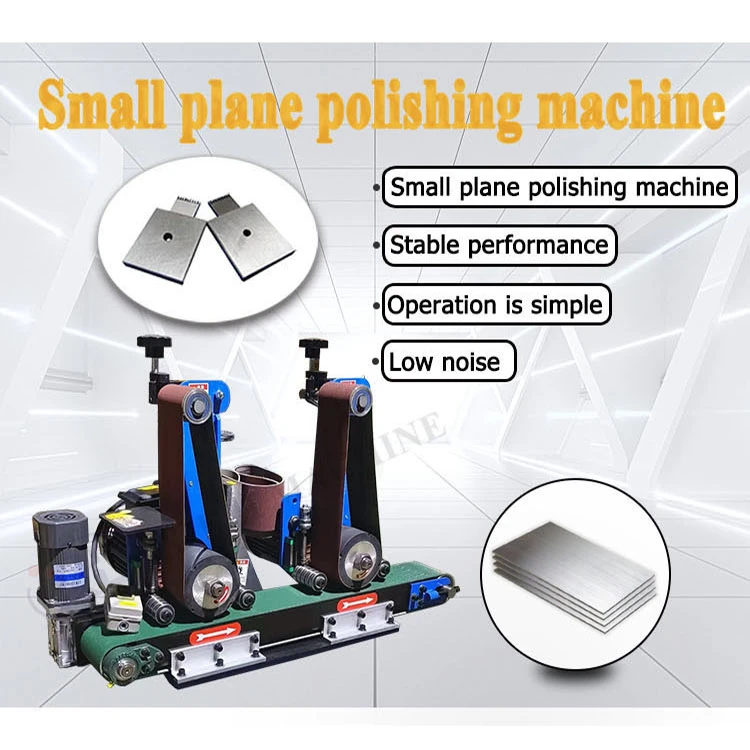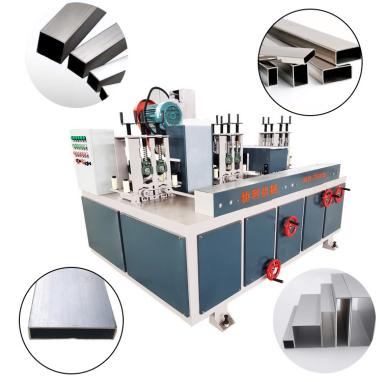Exploring Homemade Centerless Grinders The DIY Approach to Precision Grinding
Centerless grinding is a highly effective and versatile method of machining that allows for the precise shaping and finishing of various materials, particularly metals. This process eliminates the need for machine setups and allows for the continuous processing of workpieces. While professional-grade centerless grinders can be quite expensive, many enthusiasts and machinists turn to homemade solutions to achieve similar results at a fraction of the cost. In this article, we will explore the concept of homemade centerless grinders, the benefits they offer, and some basic guidelines for constructing one.
Understanding the Basics of Centerless Grinding
Before delving into the homemade aspect, let's briefly review how centerless grinding works. In a traditional centerless grinding setup, there are typically three main components the grinding wheel, the regulating wheel, and the workpiece. The workpiece is not held in a fixed position but is instead placed between these two wheels. The grinding wheel rotates at high speeds while the regulating wheel, which is typically at a slower speed, controls the feed and rotates the workpiece against the grinding surface.
This method is especially advantageous for producing cylindrical parts with tight tolerances and smooth finishes. The absence of a chuck or any other holding fixture speeds up the process significantly, making it ideal for mass production and continuous runs.
The Appeal of Homemade Centerless Grinders
The primary appeal of constructing a homemade centerless grinder is the significant cost savings compared to purchasing commercial models. Even entry-level professional machines can be quite pricey, making DIY projects appealing for hobbyists, small businesses, or those looking to experiment with machining processes without a large financial commitment.
Additionally, building your own centerless grinder allows for customization. Each user has unique needs based on the types of materials they are working with and the precision required. A homemade grinder can be tailored to specific applications, whether it's for sharpening tools or processing metal rods for a particular project.
Moreover, the satisfaction of creating something from scratch is a rewarding experience
. The process of design, construction, and testing can significantly improve one's engineering and practical skills.Designing Your Homemade Centerless Grinder
homemade centerless grinder products

To start building a homemade centerless grinder, consider the following steps
1. Research and Planning Begin by researching different designs and models. Plenty of resources and guides are available online, including forums, YouTube videos, and plans specifically designed for DIY centerless grinders. Take time to understand what's involved in the process and to create a detailed plan tailored to your requirements.
2. Gathering Materials Once you've settled on a design, gather the necessary materials. Common materials include steel for the frame, aluminum for the wheels, bearings, motors, and belts. It’s crucial to source high-quality components, especially for parts that will bear significant loads or speeds.
3. Constructing the Frame The frame serves as the foundation of your grinder. It should be sturdy and stable to prevent vibrations that could affect the precision of the grinding process. Consider adding adjustable feet for leveling and further stability.
4. Building the Grinding Mechanism The grinding setup is the heart of your machine. Carefully align the grinding and regulating wheels in accordance with your design. The ability to adjust the height and angle of the wheels will greatly impact the functionality and precision of your grinder.
5. Mounting the Motor Choose a motor that delivers adequate power for the intended use. Attach the motor securely and ensure that the belt mechanisms are set correctly for effective operation.
6. Testing and Calibration After assembly, it is crucial to test and fine-tune your grinder. Start with simple materials first and gradually work your way up to more complex projects. Calibrate the speed and alignment for optimal performance.
Conclusion
Building a homemade centerless grinder can be a fulfilling project that enhances your machining capabilities. While it may take time and effort to develop, the result is a custom tool that fits your specific needs and can save you money. As you embark on this project, don't forget to document your process and learn from any challenges you encounter. Whether you're looking to turn a hobby into a business or simply want to enjoy the machining process, a homemade centerless grinder is an exciting and practical undertaking.





